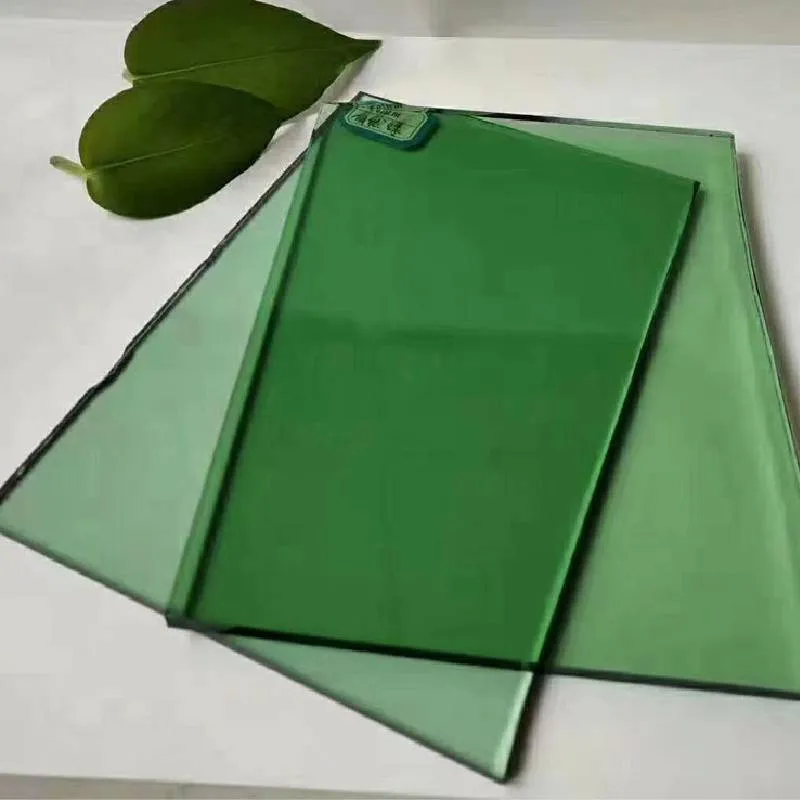The Multifaceted Benefits of Gray Reflective Glass
In recent years, architectural trends have increasingly embraced the use of advanced materials that not only enhance aesthetic appeal but also contribute to energy efficiency and safety. Among these materials, gray reflective glass has gained notable popularity for its unique properties and benefits. This versatile material is not merely a decorative element; it plays a significant role in modern construction, ensuring that buildings are both functional and visually striking.
Aesthetic Appeal
One of the primary reasons architects and designers favor gray reflective glass is its visual attractiveness. The subtle gray tint provides a sophisticated backdrop that complements various architectural styles. It can seamlessly blend into urban environments, enhancing the skyline while maintaining a contemporary look. The reflective quality of the glass adds a dynamic element; as the sun moves across the sky, the façade of the building interacts with natural light, creating shifting reflections that can make a structure appear alive. This play of light and shadow can significantly enhance the surrounding environment, encouraging a more engaging and dynamic visual experience for passersby.
Energy Efficiency
Beyond aesthetics, gray reflective glass serves an important functional purpose. Its reflective properties allow it to deflect solar radiation, which can contribute to a building's energy efficiency. By reflecting a significant portion of solar heat, the glass reduces the amount of cooling required for air conditioning systems, leading to lower energy consumption and reduced utility bills. This makes it an increasingly attractive option for eco-conscious builders and developers aiming for sustainable construction practices. In regions with high sun exposure, incorporating gray reflective glass can significantly diminish the heat island effect, thereby contributing to a more comfortable microclimate both inside and outside the building.
Thermal Insulation
gray reflective glass
In addition to reflecting heat, gray reflective glass also contributes to thermal insulation. Modern advancements in glass manufacturing have led to the creation of low-emissivity (Low-E) coatings that further enhance the insulating properties of this material. These coatings allow natural light to enter while minimizing heat transfer. As a result, buildings equipped with gray reflective glass can maintain a comfortable interior temperature year-round, which not only enhances occupant comfort but also lowers reliance on heating and cooling systems. This dual functionality makes gray reflective glass an excellent choice for both commercial and residential applications.
Privacy and Security
Another significant advantage of gray reflective glass is its ability to enhance privacy and security. The reflective surface makes it difficult for outsiders to see into buildings during the day, providing occupants with a sense of security while still allowing ample natural light to filter in. This quality is particularly beneficial for offices, conference rooms, and residential spaces where privacy is paramount. Furthermore, the durability of reflective glass adds a layer of protection against vandalism and break-ins, making it a safe choice for public buildings and businesses.
Versatile Applications
Gray reflective glass can be used in various applications, from curtain walls and storefronts to windows and skylights. Its versatility extends to both residential and commercial projects, making it a favored choice for architects looking to create striking yet functional designs. Whether it’s a sleek office building, a stylish shopping center, or a chic residential property, gray reflective glass can enhance the overall design and functionality, providing a cohesive aesthetic and practical benefits.
Conclusion
In conclusion, gray reflective glass stands out as a multifaceted material that combines beauty, energy efficiency, thermal insulation, privacy, and security. Its growing popularity in the architectural world underscores a shift towards sustainable and aesthetically pleasing building materials. As the demand for modern, eco-friendly designs continues to rise, gray reflective glass will undoubtedly remain an integral component of contemporary architecture. Its unique attributes not only elevate the visual appeal of structures but also promote a more sustainable and efficient built environment, embodying the future of construction as we move toward a greener planet.
 Afrikaans
Afrikaans  Albanian
Albanian  Amharic
Amharic  Arabic
Arabic  Armenian
Armenian  Azerbaijani
Azerbaijani  Basque
Basque  Belarusian
Belarusian  Bengali
Bengali  Bosnian
Bosnian  Bulgarian
Bulgarian  Catalan
Catalan  Cebuano
Cebuano  Corsican
Corsican  Croatian
Croatian  Czech
Czech  Danish
Danish  Dutch
Dutch  English
English  Esperanto
Esperanto  Estonian
Estonian  Finnish
Finnish  French
French  Frisian
Frisian  Galician
Galician  Georgian
Georgian  German
German  Greek
Greek  Gujarati
Gujarati  Haitian Creole
Haitian Creole  hausa
hausa  hawaiian
hawaiian  Hebrew
Hebrew  Hindi
Hindi  Miao
Miao  Hungarian
Hungarian  Icelandic
Icelandic  igbo
igbo  Indonesian
Indonesian  irish
irish  Italian
Italian  Japanese
Japanese  Javanese
Javanese  Kannada
Kannada  kazakh
kazakh  Khmer
Khmer  Rwandese
Rwandese  Korean
Korean  Kurdish
Kurdish  Kyrgyz
Kyrgyz  Lao
Lao  Latin
Latin  Latvian
Latvian  Lithuanian
Lithuanian  Luxembourgish
Luxembourgish  Macedonian
Macedonian  Malgashi
Malgashi  Malay
Malay  Malayalam
Malayalam  Maltese
Maltese  Maori
Maori  Marathi
Marathi  Mongolian
Mongolian  Myanmar
Myanmar  Nepali
Nepali  Norwegian
Norwegian  Norwegian
Norwegian  Occitan
Occitan  Pashto
Pashto  Persian
Persian  Polish
Polish  Portuguese
Portuguese  Punjabi
Punjabi  Romanian
Romanian  Russian
Russian  Samoan
Samoan  Scottish Gaelic
Scottish Gaelic  Serbian
Serbian  Sesotho
Sesotho  Shona
Shona  Sindhi
Sindhi  Sinhala
Sinhala  Slovak
Slovak  Slovenian
Slovenian  Somali
Somali  Spanish
Spanish  Sundanese
Sundanese  Swahili
Swahili  Swedish
Swedish  Tagalog
Tagalog  Tajik
Tajik  Tamil
Tamil  Tatar
Tatar  Telugu
Telugu  Thai
Thai  Turkish
Turkish  Turkmen
Turkmen  Ukrainian
Ukrainian  Urdu
Urdu  Uighur
Uighur  Uzbek
Uzbek  Vietnamese
Vietnamese  Welsh
Welsh  Bantu
Bantu  Yiddish
Yiddish  Yoruba
Yoruba  Zulu
Zulu 

